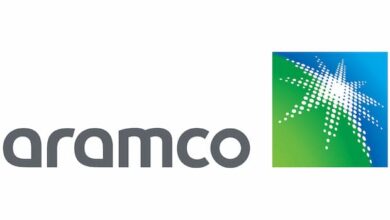Steering system charts complex well paths with variable bit speeds
Technology incorporates mud motor, MWD for continuous rotation with 3D directional control
By Wendell Bassarath, Weatherford

A new “periodic” steering technology is demonstrating the ability to achieve continuous rotation and 3D directional control using a mud motor and a measurement while drilling (MWD) assembly. Recent applications of targeted bit speed (TBS) technology in Russia have drilled complex S-shaped wellbore geometries while increasing rotating time and rate of penetration (ROP). Short laterals in Peru have been extended by thousands of feet while steering within the pay zone. In the US Bakken Shale, the technology has achieved 93% rotation in lateral sections compared with 70% in conventionally drilled offsets. Reduced sliding time on one well saved seven days of rig time.
At last count, more than 100 TBS jobs have been completed in Canada, Colombia, Mexico, Peru, Poland, Russia and the US in a variety of borehole geometries like vertical control, laterals/multilaterals, J-shaped and S-shaped wells.
Periodic steering
The TBS technology achieves directional control by modulating the flow of mud through the motor in relation to the toolface. A standard MWD system is used to control the angular position of the motor housing such that bit speed varies as a function of the toolface.
This periodic flow results in cutting a disproportionately greater volume of rock from a specific arc segment of the borehole. The hole trajectory follows the direction of the higher bit speed: Increasing RPM and ROP moves the well path toward the target, and lowering them moves the path away from the target.
Curve building is more pronounced in smaller hole sizes. A 4.75-in. system in a 6-in. hole can build approximately 3°/100 ft; an 8-in. system in a 12.25-in. hole may provide only 1°/100 ft. If sufficient doglegs are not generated in TBS mode, the motor can be oriented conventionally and slide to achieve higher build rates.
New TBS technology being tested is aimed at build rates from 3° to 5°. Higher build rates, resulting from greater toolface stability and control, are pushing TBS capabilities into the realm of rotary steerable systems (RSS).
Drilling in the middle

The TBS system provides an option for steering the bit that blurs traditional technology boundaries. Conventionally, there are two steering methods – mud motors and RSS.
Conventional bent-sub mud motor techniques use a slide-rotate sequence while drilling. This provides oriented, 2D directional control with low-to-high sliding build rates. However, the need for sliding decreases drilling efficiency and the accompanying frictional forces limit reach. Sliding also increases wellbore stability risk.
These mud motor systems typically yield a hole with a high degree of tortuosity and ledging compared with the relatively higher-quality, smoother borehole achieved with RSS. Motors, however, also have lower lost-in-hole costs and service pricing.
On the other hand, RSS provides continuous rotation while drilling and full 3D directional control. The systems provide low-to-high build rates while rotating – not sliding – which increases drilling efficiency and enables extended-reach drilling (ERD) capabilities with low rotating frictional forces.
TBS technology overlaps the capabilities of both mud motor and RSS systems. Like the RSS, it allows continuous rotation while drilling, with full 3D direction control. Current technology builds low curves while rotating in the TBS mode and low-to-high curves while sliding.
In the TBS mode, the increased efficiency due to low rotating friction makes the system capable of ERD. Because it rotates, TBS also achieves a higher quality and smoother borehole. The simpler system has a lost-in-hole cost and service pricing that is midrange between motors and RSS.
Peruvian reach
One recent application was in a well in Peru. In a field where short, 600-ft laterals were the norm, the system drilled a 3,000-ft horizontal section and set a record for the longest 8 ½-in. hole. Sliding time was just 3% of total drilling time, helping to avoid area wellbore stability issues that commonly result in sticking problems.

Russia s-wells
In Russia, TBS technology is achieving near-continuous 3D directional control while drilling difficult S-shaped well paths. More than 20 wells have been drilled.
The program began with TBS tests on two wells. The drilling results were compared with a baseline well drilled with essentially the same equipment, mud properties and drilling parameters to allow evaluation between wells and intervals.
Drilling efficiency increased in the two wells that employed the TBS technology. On a footage and time basis, the percent rotating versus percent sliding ratios increased in both wells, along with the average ROP. On a footage basis, rotating increased 8% in Well 1 and 13.3% in Well 2 versus the baseline well. On a time basis, rotating increased 5.9% in Well 1 and 25.2% in Well 2 compared with the baseline well. Average ROP also increased by 30.6% in Well 1 and 35.9% in Well 2 compared with the baseline well.
Buzuluk drilling
Wells in the Buzuluk area of southeast Russia commonly use S-shaped designs to reach reservoir targets. The complex geometry is typically the most challenging to drill with the TBS system because the same tools are used to drill the curve, hold the tangent and drop the angle.
The Buzuluk area has more than 1,000 wells, and the geology in the area is well known. To reduce the number of surface locations and minimize the operational footprint, wells are drilled from pads and may have horizontal displacements greater than 3,300 ft (1,000 meters). Drilling is complicated by lost circulation that may occur in several formations.
Sliding is often required to maintain hole direction when using traditional methods to drill the high-angle wells. The result is low surface-to-bit weight transfer resulting in lower ROP.
The operator needed a cost-effective alternative that would reduce the sliding time needed to drill the well and increase the overall ROP. Trials of the TBS system were conducted in the Shirokodolskoye field, where sliding frequently accounted for 25% to 30% of total drilling time.
In a four-well trial, two development wells were drilled using TBS technology.

All the wells targeted the same reservoirs and used the same water-based mud with near identical properties and weights.
All key metrics, including the footage, time and ROP data, showed significant well-to-well improvement. Total footage drilled increased from 7,979 ft (2,432 meters) in the baseline well to 8,248 ft (2,514 meters) in Well 2, while rotating footage and sliding footage decreased. The ratio of rotating time to sliding time improved by more than 25% and average ROP increased from 26 ft/hr (7.97 meters/hr) in the baseline well to 35.66 ft/hr (10.87 meters/hr) in Well 2 for an increase of more than 35%.
Improvements in key metrics also occurred on an interval-to-interval basis. While maximum inclination increased, average ROP and percent rotating versus percent sliding improved with each interval drilled, increasing from 87.5/12.5% in the baseline well to 99.1/0.9% in Well 2. This occurred despite hard formations in two intervals that slowed ROP significantly. Penetration rates in each well steadily improved with 34 ft/hr (10.42 meter/hr) in Well 1 and 35.66 ft/hr (10.87 meter/hr) in Well 2 versus the baseline well rate of 26.14 ft/hr (7.97 meter/hr).
In the tangent section of Well 2, TBS technology drilled almost 6,233 ft (1,900 meters) with continuous rotation.
Bakken application
In the North Dakota sector of the Bakken shale, two development wells were drilled with TBS technology using the same rig and crews and oil-based mud systems. Key performance indicators included ROP, slide time and days on location.
Offset wells drilled with conventional mud-motor steerable assemblies typically exhibited sliding times averaging 25% to 30% of the total for the lateral; ROP while sliding was 25% to 50% of rotating ROP.
The TBS system consistently achieved more than 93% rotation in the lateral section of both wells. This represents a significant improvement from offset wells, which were limited to approximately 70% rotation. On the first well, sliding time was reduced from 30% to 8%, saving seven days of rig time.
Well 1 was a horizontal well drilled to a total depth (TD) of 19,632 ft (5,984 meters) with 10,217 ft (3,114 meters) of lateral leg. It required four bit runs in the lateral leg at an average 38.08 ft/hr ROP (11.6 meters/hr).
The first run was terminated prematurely with no footage made. In the second run, the lateral leg was drilled from 9,415-ft measured depth (MD) (2,870 meters) to 12,233-ft MD (3,729 meters) with TBS buildup rates (BUR) as high as 2.3°/100 ft (30.48 meter/100 ft). Total rotary time was 47.67 hrs and 9.92 hrs oriented.
Bit run three continued the lateral to 15,983-ft MD (4,872 meters) and achieved doglegs as high as 2°/100 ft, with a total rotary drilling time of 82.50 hrs and 20.25 hrs oriented. Run 4 drilled to TD at 19,632-ft MD (5,984 meters). Doglegs reached 1.5°/100 ft, with a total rotary time of 77.50 hrs and 30.50 hrs oriented.
Well 2 was drilled to 18,232-ft TD (5,557 meters) with a 8,956 ft (2,730 meters) lateral. This well had two bit runs that average 30.67 ft/hr ROP (9.34 meters/hr). The first run used TBS technology to drill from 9,276-ft MD (2,827 meters) to 18,232-ft MD (5,557 meters). On bit run two, a downhole software problem prevented the TBS mode from engaging. Instead of making a bit trip, drilling was continued, but increasing tortuosity ended drilling 1,400 ft (427 meters) short of the target. Torque and drag increased so significantly that further sliding was impossible.
Run two demonstrated the ability of the system to seamlessly change to a conventional slide-rotate sequence without having to trip for a tool change. Although the system could not be activated for this run, the ability to drill conventionally provided engineers with the option to continue. ROP in the first well was higher than the second well, where lack of the TBS system resulted in more sliding time to correct the well path.
In addition, the second well was terminated short of the target TD because high frictional forces in the lateral leg could not be overcome. In Well 1, TD was reached with a smoother wellbore that resulted in a trouble-free casing run.




